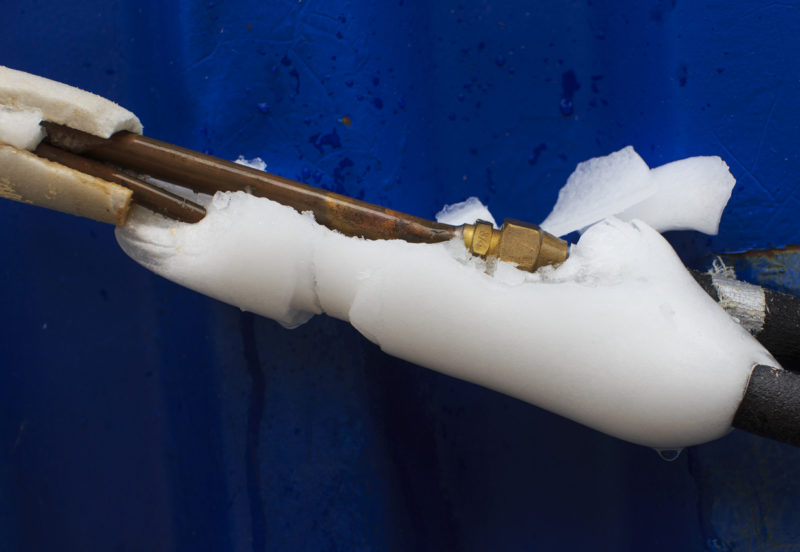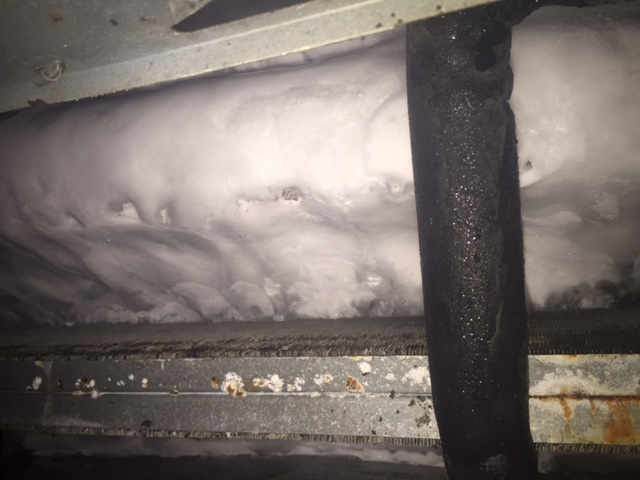Identifying a Frozen AC Pipe - Efficient Fixes for House Air Conditioning Systems
Identifying a Frozen AC Pipe - Efficient Fixes for House Air Conditioning Systems
Blog Article
Here in the next paragraph you can find additional outstanding information with regards to Air Conditioner Frozen? How To Fix your Frozen AC Line.

Intro
Discovering that your air conditioner pipe is frozen can be worrying, especially throughout warm summertime when you rely on your air conditioner the most. Understanding what to do in such a circumstance is vital to avoid more damages to your air conditioning system and guarantee your comfort inside.
Understanding the Causes
Several factors can add to the cold of an air conditioning pipe. Comprehending these reasons can aid you deal with the problem effectively.
Lack of Airflow
One common reason for a frozen AC pipe is inadequate air flow. When the air flow over the evaporator coil is restricted, it can trigger the coil to go down below freezing temperature, leading to ice development on the pipeline.
Low Refrigerant Levels
Insufficient cooling agent degrees in your a/c system can additionally lead to a frozen pipe. Low cooling agent levels can cause the stress in the system to drop, causing the freezing of moisture on the evaporator coil.
Cold Weather Conditions
In colder climates, freezing temperature levels outside can contribute to the cold of a/c pipes. If your AC device is not properly shielded or if there are leaks in the ductwork, chilly air can penetrate the system, creating the pipe to ice up.
Dirty Air Filters
Filthy or stopped up air filters can limit airflow in your a/c system, leading to various issues, consisting of an icy pipe. It's vital to change or clean your air filters consistently to guarantee correct airflow and stop ice build-up.
Signs of a Frozen Air Conditioning Pipe
Identifying the indicators of an icy a/c pipeline is crucial for prompt activity.
Decreased Airflow
If you discover a considerable decline in airflow from your vents, it might suggest a frozen pipeline.
Ice Buildup on the Pipe
Visible ice buildup on the refrigerant line or the evaporator coil is a clear indication of an icy air conditioning pipe.
Weird Sounds from the Unit
Uncommon audios, such as hissing or gurgling, coming from your air conditioning system can signal that there's ice present on the pipeline.
Immediate Actions to Take
When confronted with an icy air conditioning pipeline, it's necessary to act promptly to avoid additional damages to your air conditioning system.
Turning off the a/c
The primary step is to switch off your a/c unit to prevent the system from running and worsening the concern.
Checking for Blockages
Inspect the location around the indoor system for any obstructions that may be obstructing air movement, such as furnishings or curtains.
Defrosting the Pipe
You can make use of gentle approaches like putting towels soaked in warm water around the frozen pipeline to aid thaw it slowly.
Safety nets
Taking preventive measures can assist avoid future events of a frozen air conditioner pipe.
Normal Maintenance Checks
Schedule regular upkeep contact a professional HVAC professional to guarantee that your a/c system is running efficiently.
Altering Air Filters
Consistently change or clean your air filters to prevent air flow limitations and preserve optimal performance.
Shielding Exposed Pipes
If your air conditioner pipes are revealed to cool temperature levels, think about insulating them to stop cold throughout cold weather.
Seeking Professional Help
If DIY methods fail to resolve the concern or if you're uncertain concerning exactly how to continue, it's best to seek help from a qualified HVAC technician.
When DIY Methods Fail
If your attempts to thaw the pipe or address various other issues are not successful, it's time to hire an expert.
Relevance of Hiring a Professional HVAC Technician
A certified HVAC service technician has the knowledge and tools needed to detect and repair issues with your a/c system safely and successfully.
Verdict
Handling a frozen air conditioning pipeline can be an aggravating experience, yet understanding exactly how to respond can assist lessen damages and recover convenience to your home. By comprehending the causes, identifying the indications, and taking prompt activity, you can successfully resolve the problem and prevent future events.
What to Do If Your AC Line Is Frozen
Make Sure All Supply and Return Air Vents Are Open
If you notice problems with airflow, the first thing you should do is check your supply and return vents. Supply vents distribute clean, conditioned air throughout your home. As this air becomes stale, it’s pulled into the return vent, where it’s reconditioned before being sent back out through the supply vent.
When these vents are closed, air won’t flow in the home. Before examining your AC, check the vents in every room and ensure they’re all open.
Check for a Dirty Air Filter
Another possible cause of limited airflow is a dirty air filter. Your air conditioner’s filters catch elements you don’t want to breathe in, such as dirt and dust. Over time, filters can become clogged, ultimately blocking air from flowing in and out. The lack of airflow can then cause the entire coil to freeze and will completely restrict any air from moving through it. The AC may need to be powered off for one to two days to allow the coil to thaw after replacing the filter to allow proper functioning of the unit. This debris can also accumulate on your AC’s evaporator coil, requiring a more serious repair. In general, air filters should be cleaned regularly (about every two weeks).
Assess Your Outdoor Unit
In addition to checking your AC, assessing the outdoor unit is a good idea. Also known as the condensing unit, it works with your interior unit to release heat outside. An issue with the outdoor unit can result in rising internal temperatures.
Overgrown Shrubs or Clogged Leaves
From leaves and twigs to shrubs and debris, there’s no shortage of outdoor elements that can accumulate around your condensing unit. When these elements get lodged inside the unit, they can block airflow. Fortunately, removing the blockage can solve the problem.
Sounds of a Broken Fan
Shrubs and leaves aren’t the only things that can impede your outdoor unit’s airflow. If the fan is broken, the unit won’t be able to properly get rid of heat — which means the internal temperature won’t go down. First, make sure the fan is spinning. If it is, check for the following sounds of a broken fan:
Buzzing Rattling Screeching Hissing Clicking Preventative Measures
Nobody wants to deal with a frozen AC line. In addition to causing problems with your air conditioner, they require professional repairs. On the bright side, there are preventative measures you can take to help ensure this issue doesn’t arise in the first place.
https://www.coopergreenteam.com/blog/what-to-do-if-ac-line-frozen

I'm certainly very curious about Have a Frozen AC Line? Here’s How to Fix It and I really hope you enjoyed the new piece. For those who enjoyed our page if you please do not forget to share it. I treasure reading our article about What Do I Do If My AC Pipe Is Frozen.
Call Today Report this page